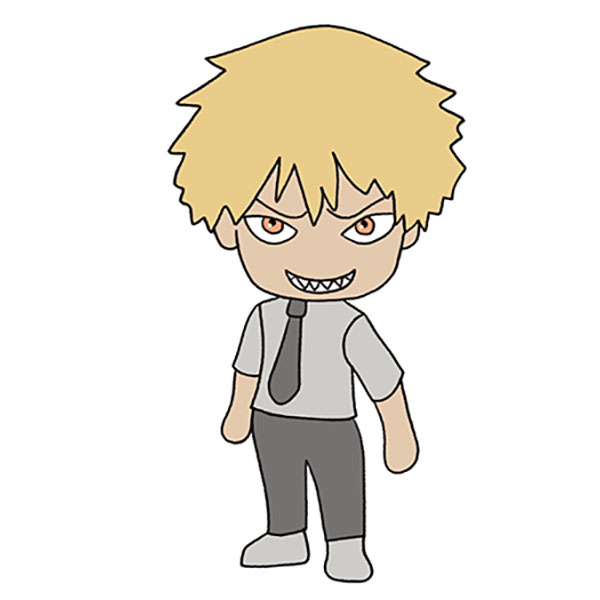How to Draw Lego Batman
Embarking on this lesson on how to draw Lego Batman, I’ve developed a method that breaks down the beloved superhero into simple, block-like shapes. This tutorial is the product of my passion for sharing the joy of drawing, aimed to enable readers of all ages and abilities to create their own Lego Caped Crusader.
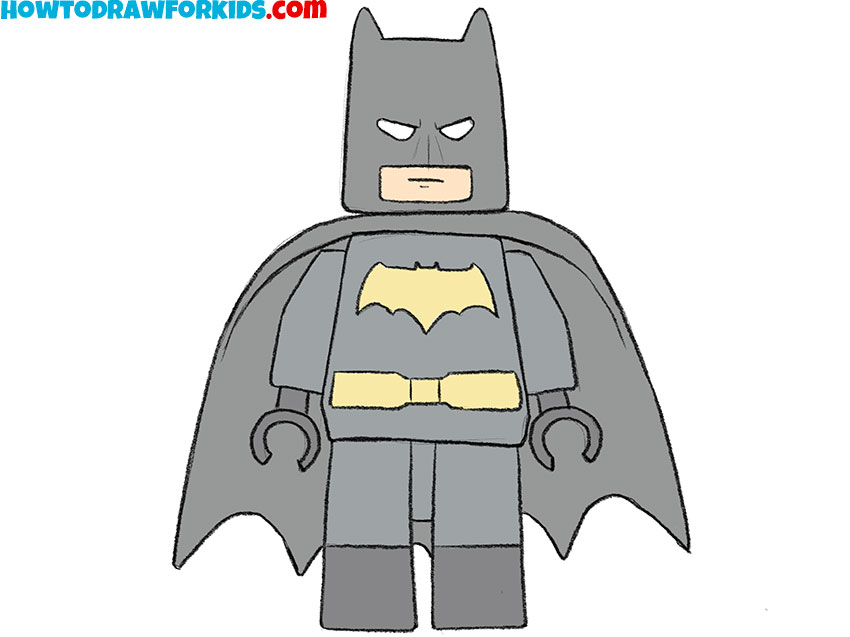
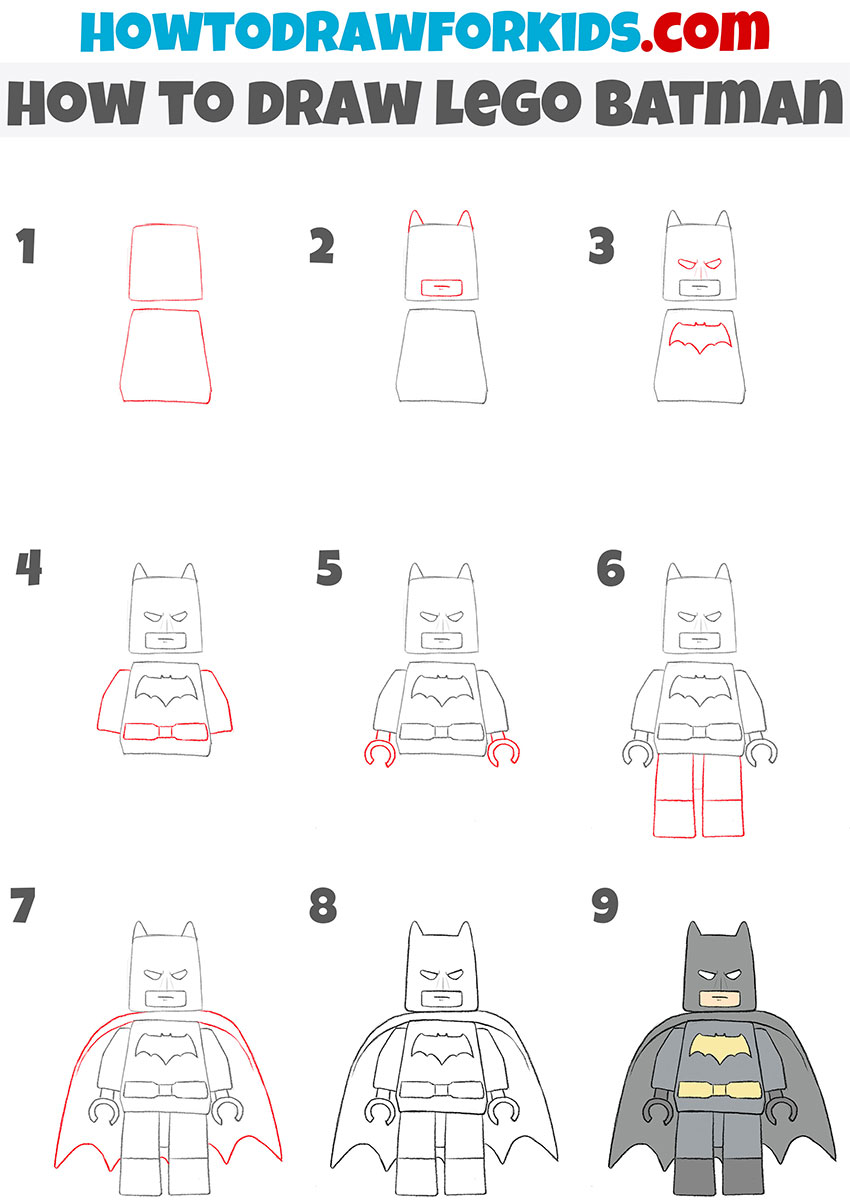
How to Draw Lego Batman: Basic Information
Welcome, aspiring artists, to a step-by-step class where you’ll learn the craft of capturing Lego Batman on paper. I’ve meticulously constructed this lesson to transform you into a maestro of miniature superheroes. We’ll start with basic geometric shapes, then layer on the details that embody Batman’s Lego likeness.
With a focus on the special features of our Lego Batman drawing, such as the iconic cowl and cape, each stroke you make will bring this beloved character closer to reality. Notice the simplicity behind the design, the straight lines for the body, and the distinctive utility belt that adds both complexity and charm.
Let’s embark on this creative adventure to draw Lego Batman, where every line counts and every detail matters. I’ve tailored each segment of the tutorial to build your confidence as you progress from a blank page to a full-fledged Lego Batman. Remember, with each line and shadow, you’re bringing a small piece of Gotham to life right before your eyes.
Lego Batman Drawing Tutorial
Materials
- Pencil
- Paper
- Eraser
- Coloring supplies
Time needed: 40 minutes
How to Draw Lego Batman
- Sketch the head and torso of Lego Batman.
Begin with a simple geometric approach by sketching a rectangle for Lego Batman’s torso and a square for his head. Ensure the proportions reflect the blocky, toy-like nature of a Lego figure.
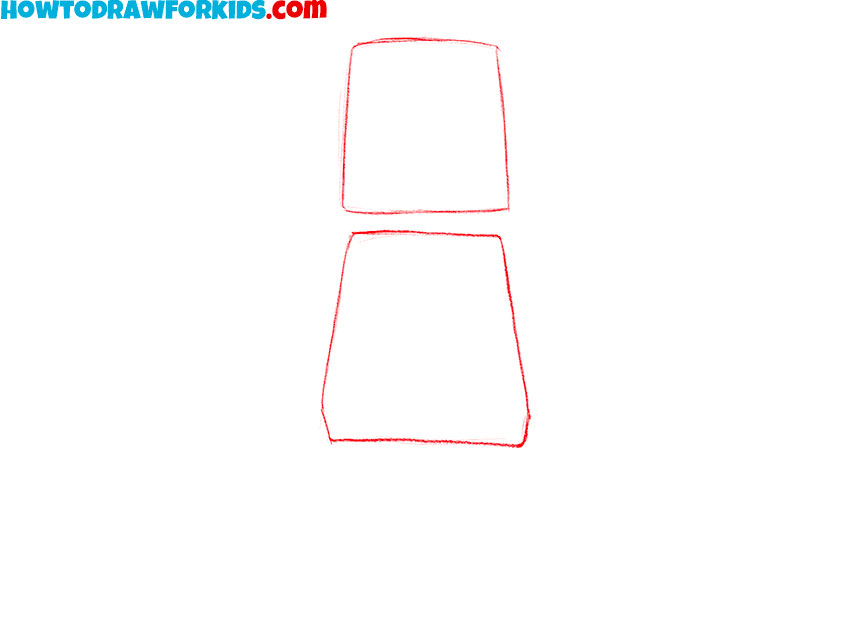
- Draw the ears and mouth of Lego Batman.
Add two small triangles at the top of the head for Lego Batman’s signature pointy ears. Sketch the outline of his mask’s eye hole just below, making it rectangular to maintain the Lego aesthetic.
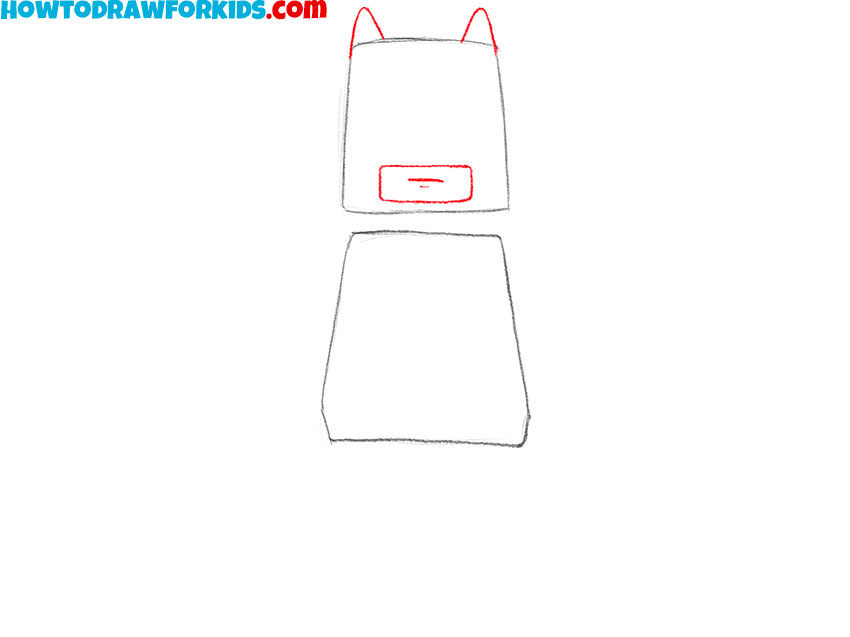
- Draw the eyes and Batman’s logo.
Inside the mask’s shape, draw two small rectangles for the eyes, giving Batman a stern look. Sketch the bat logo in the center of the torso rectangle, a vital symbol of Batman’s identity.
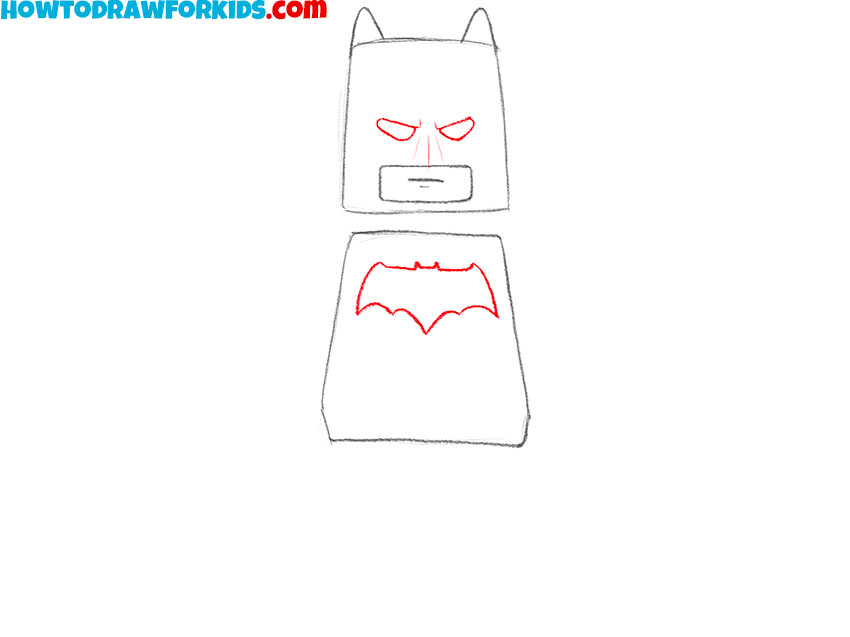
- Add the arms and belt.
To illustrate the arms, draw two rectangles on either side of the torso. Add the utility belt detailing around the torso’s lower edge with small rectangular shapes to indicate the various compartments.
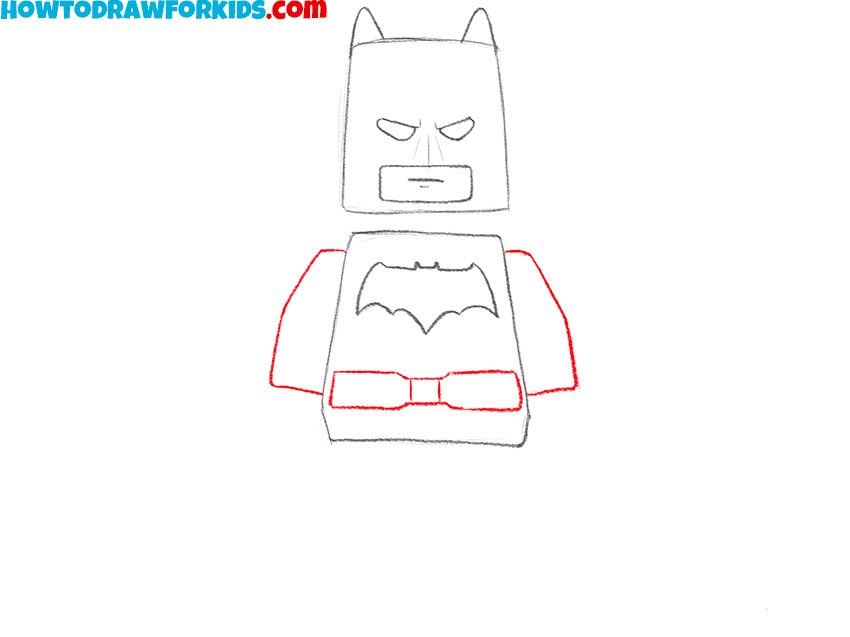
- Add the hands.
Create two C-shaped curves at the end of each arm. This stylized representation captures the clasping ability of Lego figures, which is essential for interaction with Lego accessories.
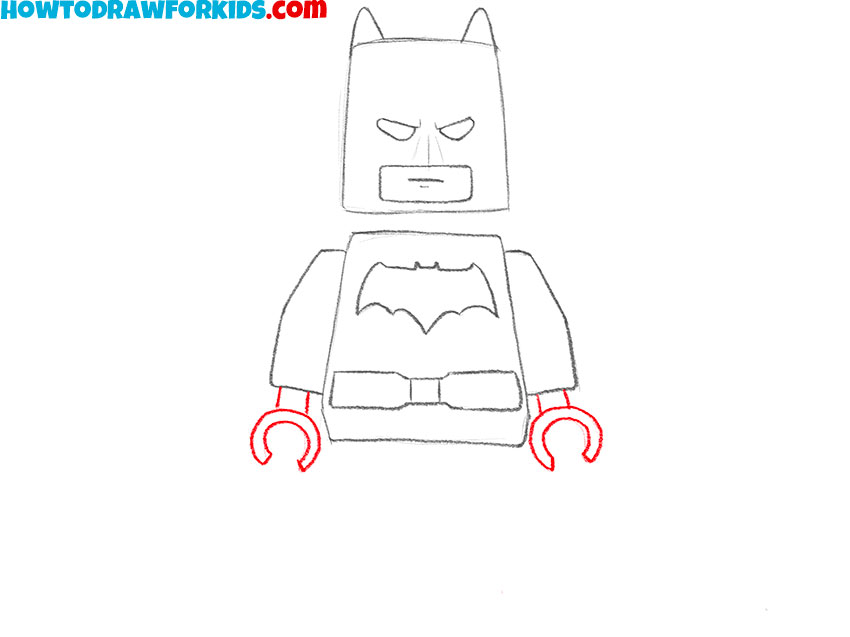
- Draw the legs of Lego Batman.
The legs of Lego Batman, like all Lego men, should be very angular and poorly detailed. The legs should essentially look like two elongated rectangles.
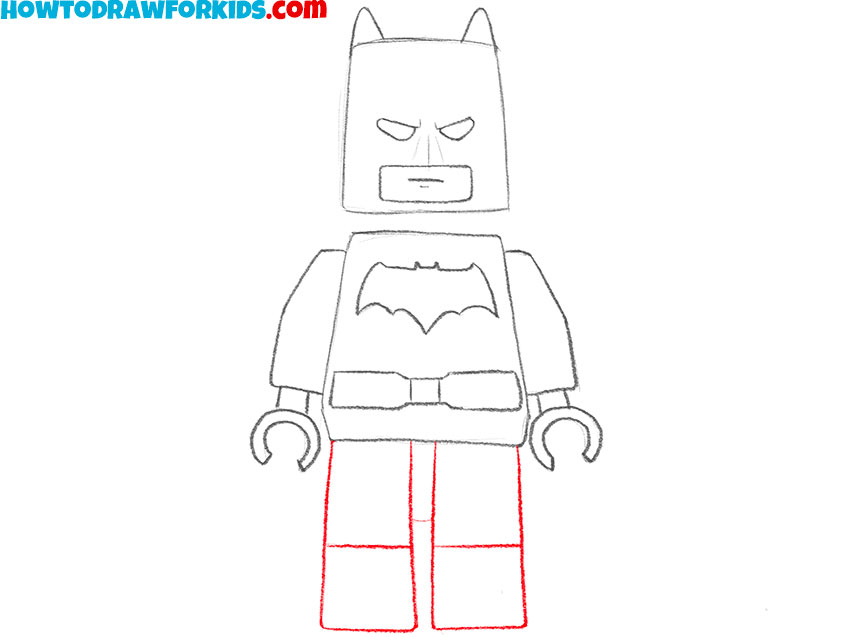
- Add the cape of Batman.
Use smooth, wavy outline, starting from the shoulders and flowing down to the character’s mid-leg. The bottom edge of the Lego Batman cape should be depicted using a wavy line.
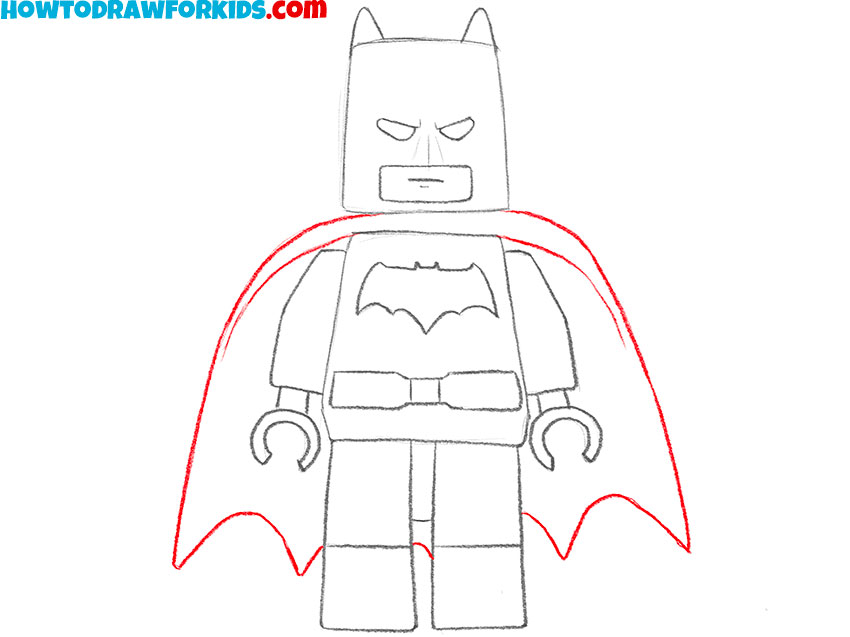
- Erase the guidelines from you Lego Batman.
Clean up your drawing by erasing all the initial guidelines that helped shape Batman. This step will refine the figure, leaving a clear and tidy illustration that showcases your Lego Batman in its final form.
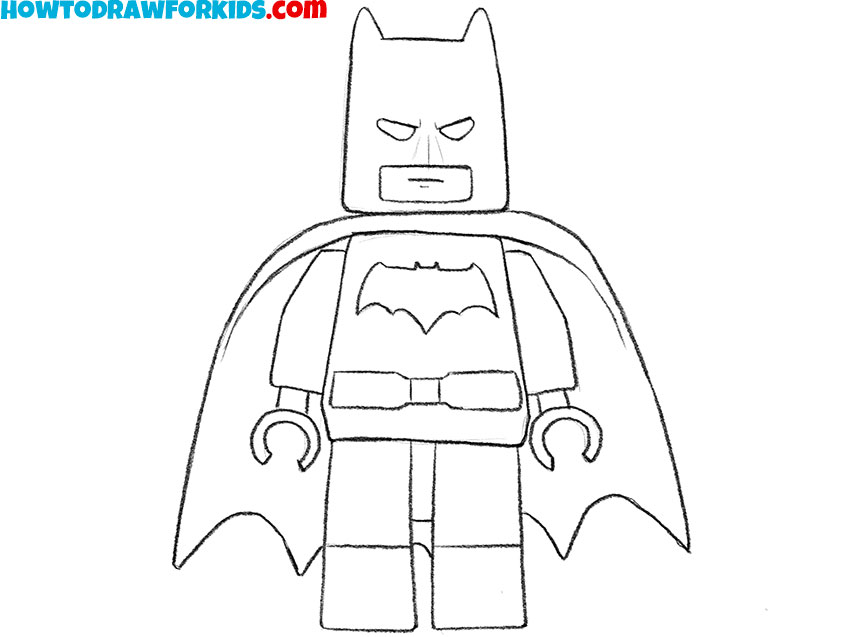
- Color the Lego Batman artwork.
Finish by coloring your Lego Batman, choosing a palette of greys, blacks, and yellows to match his classic costume. Fill in the colors carefully, paying attention to the distinct sections of the figure.

Additional Content
In addition to the online tutorial, I’ve crafted a free downloadable PDF file that distills the lesson into a brief, easy-to-use guide. This allows you to carry the instructions for drawing Lego Batman with you, ready for use with or without internet access. It’s a resource meant to support your drawing journey wherever you are.
This portable PDF guide is streamlined for ease of use, capturing the core elements of the Lego Batman drawing process. It’s ideal for artists who prefer to have a physical copy for practice or those who may not always have reliable internet connectivity. Use it as a companion piece to the full lesson, or as a standalone reference.
By offering this PDF, my aim is to make learning to draw Lego Batman as accessible as possible. It’s a tool designed to grow with you, available in just a few clicks. Keep it on your favorite device, or print it out and add it to your art kit – however you use it, it’s there to enhance your creative experience.
Technical Nuances of Lego Batman Illustration
As we conclude this artistic journey, it’s vital to reflect on the technical nuances that elevate our Lego Batman from a mere sketch to a vibrant illustration. It’s these intricacies that infuse life into our drawing, enabling our creation to transcend the confines of paper.
- Proportion and Symmetry: Always begin by ensuring the head, torso, and legs of Lego Batman are in correct proportion to one another. Symmetry is key, particularly when drawing the eyes and the emblem on the chest.
- Bold Outlines: Lego figures are characterized by their bold outlines. Use a steady hand to accentuate the edges of Batman, giving your drawing a definitive and clean look.
- Color Palette: Be mindful of the color scheme; the classic grey and black with hints of yellow for the utility belt and emblem capture the essence of Lego Batman. Precision in coloring within the lines will ensure a neat appearance.
- Shadows and Highlights: Adding shadows beneath the cape and around the legs gives depth, while subtle highlights can suggest the reflective nature of Batman’s armor.
- Cape Dynamics: The cape should have a life of its own; even when simplifying it for a Lego character, adding a sense of movement will bring dynamism to your drawing.
Each point, each line, each shade you’ve added contributes to the grand tableau of your Lego Batman. In the dance of pencil and paper, the technical nuances are your steps – measured, precise, and purposeful. Embrace these final touches with the reverence they deserve, for they are the silent architects of your masterpiece’s soul.
FAQs on Creating Lego Batman
Wrapping up this detailed guide on drawing Lego Batman, it’s clear that questions might arise, echoing the thoughts and challenges many artists face. To illuminate these shared paths of inquiry, a carefully curated list of frequently asked questions has been prepared.
- How can I improve the symmetry in my drawing? Use guidelines. Begin with light pencil strokes to outline the basic shape, ensuring each side mirrors the other before reinforcing any lines.
- My Lego Batman looks stiff. How can I make it more dynamic? Practice drawing the figure in different poses, even if it’s a slight tilt or turn. Remember, slight variations in the positioning of the legs or arms can add a lot of dynamism.
- How do I choose the right colors for shading and highlighting? Observe photos of Lego Batman for reference. Use a slightly darker shade for shadows and a lighter tone for highlights, adhering to the color scheme of the suit.
- Can I customize my Lego Batman drawing? Absolutely! Feel free to add personal touches, such as unique background elements or accessories, to make your drawing stand out.
- What’s the best way to fix mistakes in my drawing? Use a light touch with your pencil until you’re confident about the lines. Erasers are your friend, but fine liners should be used cautiously. If a mistake occurs, try turning it into a creative detail.
- How can I make my Lego Batman drawing look more professional? Pay attention to clean lines, consistent coloring within the lines, and proper use of shadows and highlights. Practice is key to developing a polished look.
Through these FAQs, we’ve touched on the essentials that bridge common concerns and elevate your skill in drawing Lego Batman. Remember, each question you ask is a step forward in your artistic journey. Embrace curiosity, seek clarity, and let every answer guide you to new heights of creativity.
Conclusion
Now that you’ve mastered how to draw Lego Batman, the door to endless creativity stands wide open. On my website, you’ll find a variety of lessons, from sketching a spooky haunted house to capturing the fierce gaze of a hawk. Follow my social media to stay updated with the latest and most inspiring content.
I eagerly anticipate your suggestions and thoughts on what lessons should come next. Your input enriches our community, making every tutorial more engaging and tailored to your interests. Please leave a comment below with your ideas or requests, helping to shape our future artistic explorations together.



